The 1881 Morgan Silver Dollar value ranges from $30-$50 in circulated condition to several hundred dollars for uncirculated pieces, depending on mint mark. The “CC” (Carson City) variant is most valuable due to low mintage of 296,000 coins. “S” (San Francisco) versions are prized for quality striking, worth $50-$200+ in high grades. “O” (New Orleans) and no mint mark (Philadelphia) examples are more common but still collectible. Error coins including clashed dies, doubled dies, repunched mint marks, and off-center strikes can significantly increase value. To determine worth, identify the mint mark on the reverse above the denomination, check for errors, assess condition grade, and consult a professional numismatist for rare specimens.
Finding an 1881 Morgan silver dollar in your collection could mean you’re holding anywhere from $30 to over $1,200 depending on three critical factors: the mint mark, the coin’s condition, and whether it features any valuable errors. While most circulated examples trade near silver melt value, certain mint marks—especially the coveted “CC” from Carson City—can transform an ordinary dollar into a serious collector’s prize. Understanding what separates a $40 coin from a four-figure specimen starts with knowing where to look and what to look for.
Philadelphia Mint: The Common Workhorse With Surprising Upside
The 1881 Morgan dollar struck at the Philadelphia Mint carries no mint mark, making it the most frequently encountered version among collectors. With a mintage of 9,163,975 coins, Philadelphia produced more than three times the combined output of all other mints that year. This abundance makes it an affordable entry point for Morgan dollar collectors, but don’t dismiss these coins as universally common.
In circulated grades from Good-4 through About Uncirculated-50, Philadelphia strikes typically sell for $30 to $50, with prices closely tracking the spot price of silver. The coin contains 0.77344 troy ounces of pure silver, establishing a baseline value that fluctuates with precious metals markets. However, the value proposition changes dramatically in mint state condition.
Uncirculated examples graded MS-60 to MS-63 generally trade between $60 and $125, depending on eye appeal and strike quality. When you reach MS-64, values jump to $175-$250, as fewer coins survived in this preservation level. The real excitement begins at MS-65 and above. A PCGS-graded MS-65 example sold at Heritage Auctions in 2023 for $420, while MS-66 specimens have reached $850-$1,100 at recent auctions. At the absolute peak, an MS-67 graded by NGC brought $4,200 in a 2022 sale, demonstrating how condition dramatically impacts value even for common-date issues.
| Grade | Typical Value Range |
|---|---|
| Good-4 to Fine-12 | $30-$35 |
| Very Fine-20 to AU-50 | $38-$48 |
| MS-60 to MS-62 | $60-$90 |
| MS-63 | $95-$125 |
| MS-64 | $175-$250 |
| MS-65 | $380-$450 |
| MS-66 | $800-$1,100 |
| MS-67 | $3,500-$5,000 |
Carson City: The Crown Jewel of 1881 Morgan Dollars
The 1881-CC represents everything collectors love about Carson City coinage: low mintage, Western history, and consistent market demand. With only 296,000 pieces struck, this issue had the smallest production run of any 1881 Morgan dollar by a substantial margin. The Carson City Mint operated in Nevada’s silver country from 1870 to 1893, and its output remains highly prized regardless of denomination.
Even heavily circulated 1881-CC dollars in Good-4 condition command $425-$475, more than ten times the value of their Philadelphia counterparts. As condition improves, premiums expand proportionally. Very Fine examples trade for $500-$575, while About Uncirculated pieces reach $650-$850 depending on the specific grade and surface quality.
Uncirculated Carson City dollars enter serious collector territory. An MS-60 example starts around $900-$1,050, with MS-62 pieces bringing $1,100-$1,350. The MS-63 grade level, representing choice uncirculated quality with good luster and minimal contact marks, typically sells for $1,400-$1,800. Littleton Coin Company currently lists a “Very Choice Uncirculated” (likely MS-64) example at $1,249, though auction results for certified MS-64 coins have reached $2,200-$2,800.
At MS-65, you’re looking at $3,500-$4,800, and MS-66 specimens have sold for $8,000-$12,500 in recent years. The finest known example, graded MS-67+ by PCGS, brought an astounding $49,200 at a Stack’s Bowers auction in 2021, setting a record for the date and mint mark combination.
The survival rate for 1881-CC dollars in mint state remains relatively low despite a significant quantity being released from Treasury vaults during the 1960s GSA sales. Many examples show bagmarks from long storage, making truly choice specimens genuinely scarce.
New Orleans Production: The Middle Ground Value Play
The New Orleans Mint struck 5,708,000 Morgan dollars in 1881, identified by the small “O” mint mark below the wreath on the reverse. While not as scarce as the Carson City issue, 1881-O dollars occupy an interesting position in the market—more available than CC coins but generally better struck and more lustrous than many Philadelphia examples from the same year.
Circulated 1881-O dollars in Good through Fine condition typically sell for $32-$42, only slightly above the Philadelphia issues. The premium increases modestly in Very Fine to About Uncirculated grades, where examples trade for $45-$65. The New Orleans Mint’s quality control during this period varied, and well-struck examples with good detail command the higher end of these ranges.
In mint state, the 1881-O becomes more interesting. MS-60 to MS-62 grades sell for $70-$110, while MS-63 examples bring $125-$185. The population thins considerably at MS-64, where values jump to $250-$400. Strike quality becomes critical at this level—coins with full breast feathers on the eagle and sharp hair detail above Liberty’s ear sell for premiums above generic MS-64 examples.
Premium quality 1881-O dollars graded MS-65 have sold for $650-$950 at major auctions, with MS-66 specimens reaching $2,400-$3,800. An exceptional MS-67 example certified by NGC brought $14,400 at a 2023 Heritage auction, proving that condition rarities exist even for relatively common dates.
San Francisco Strikes: Quality Over Quantity
The San Francisco Mint produced 12,760,000 Morgan dollars in 1881, making it the highest-mintage facility that year. The “S” mint mark appears below the wreath on the reverse, just like the New Orleans issue. San Francisco earned a reputation for producing well-struck Morgan dollars with exceptional luster, and the 1881-S exemplifies this tradition.
Despite the high mintage, most 1881-S dollars entered circulation in Western states, resulting in heavy attrition. Circulated examples in Good through Very Fine grades sell for $33-$46, comparable to other mint marks. About Uncirculated pieces bring $50-$70, with AU-58 examples—those showing just a trace of wear on the highest points—reaching $75-$95.
The 1881-S shines in uncirculated condition, where the San Francisco Mint’s quality standards become apparent. MS-60 to MS-62 examples trade for $85-$135, with MS-63 pieces bringing $150-$225. These coins often display deep, frosty luster and sharp strikes that make them visually appealing beyond their technical grade.
At MS-64, values increase to $280-$425, and MS-65 specimens sell for $550-$850 depending on eye appeal. The 1881-S becomes genuinely scarce in MS-66, where certified examples have brought $1,800-$3,200 at auction. At the peak, MS-67 coins have reached $8,500-$15,000, with an MS-68 specimen graded by PCGS selling for $52,800 in 2019, representing one of the finest Morgan dollars from any year.
Collectors prize 1881-S dollars with “Deep Mirror Prooflike” (DMPL) surfaces, where the fields show reflectivity of six inches or more. These special strikes can command double or triple the value of standard mint state coins in the same grade.
Error Coins: When Mistakes Become Treasures
Manufacturing errors on 1881 Morgan dollars can significantly increase value, sometimes exceeding even the Carson City premium. Understanding these errors requires examining your coin carefully, preferably under magnification with good lighting.
Clashed Die Errors occur when the obverse and reverse dies strike each other without a planchet between them. This transfers portions of one design onto the opposite die, creating ghost images on subsequently struck coins. On 1881 Morgan dollars, clashed die errors often show faint traces of the eagle’s wing tips appearing in the field around Liberty’s portrait, or portions of Liberty’s profile showing near the eagle. Minor clashing adds $10-$25 to value, while dramatic examples with clearly visible transferred design elements can bring $150-$400 depending on severity and overall coin grade.
Doubled Die Varieties result from dies receiving multiple impressions during the hubbing process, creating doubled images in portions of the design. The 1881 Morgan dollar series includes several documented doubled die varieties, though none reach the dramatic doubling seen on certain other dates. A true doubled die shows doubling in letters, dates, or design elements visible to the naked eye or under low magnification. An 1881-O with strong doubled die obverse features sold for $825 in MS-63 grade at a 2022 auction, compared to $140 for a normal MS-63 example.
Repunched Mint Marks (RPMs) occurred when mint workers manually punched mint marks into working dies. If the initial punch wasn’t positioned correctly, they punched again, creating a doubled or offset mint mark. The 1881-O and 1881-S issues include several collectible RPM varieties. Most minor RPMs add $15-$50 to a coin’s value, but dramatic examples showing significant doubling or offset can bring $100-$300 premiums. The 1881-O VAM-35, featuring a repunched “O” showing clearly separated images, brings $200-$350 in uncirculated grades.
Off-Center Strikes happen when the planchet isn’t properly centered between the dies during striking. Minor off-center errors (5-10%) add modest premiums of $75-$200, while dramatic examples missing 25-50% of the design can bring $500-$1,500. A 1881 Philadelphia strike with approximately 30% off-center error sold for $1,150 in 2023, despite being only in Fine condition—proof that dramatic errors trump grade for many collectors.
Other Valuable Errors to watch for include:
- Die cracks and die breaks: $25-$200 depending on prominence
- Lamination errors (metal flaking): $50-$300
- Struck-through errors (foreign material between die and planchet): $100-$400
- Wrong planchet errors (struck on incorrect metal): $2,000+
The VAM (Van Allen-Mallis) variety attribution system catalogs dozens of die varieties for 1881 Morgan dollars across all mint marks. While most VAMs add minimal value, certain scarce varieties command significant premiums. Consulting the VAM World website or specialized references can help identify potentially valuable varieties.
Grading Standards: The Difference Between Dollars and Thousands
Accurate grading determines whether your 1881 Morgan dollar sells for $40 or $4,000. Professional grading services like PCGS (Professional Coin Grading Service) and NGC (Numismatic Guaranty Company) use the 70-point Sheldon scale, but understanding the key grade breakpoints helps you assess what you have.
Circulated Grades show wear from use in commerce:
- Good-4 to Good-6: Heavy wear with major design elements visible but flat. Rim intact but may merge with lettering.
- Fine-12: Moderate wear with all major details visible. About 50% of hair detail remains visible above Liberty’s ear.
- Very Fine-20 to VF-30: Light to moderate wear with most details sharp. At least 75% of hair lines visible.
- Extremely Fine-40 to EF-45: Slight wear on highest points only. Nearly full hair detail and feather definition.
- About Uncirculated-50 to AU-58: Traces of wear on highest points. AU-58 may appear uncirculated at first glance.
Mint State Grades show no wear from circulation:
- MS-60 to MS-62: Uncirculated but with numerous contact marks, possible scuffs, and average luster. These coins often sat in bags with other coins for decades.
- MS-63: Choice uncirculated with fewer marks, good luster, and decent eye appeal. Marks are smaller and less distracting.
- MS-64: Better luster, strike, and surfaces. Few significant marks, none in prime focal areas.
- MS-65: Gem quality with minimal marks visible to the naked eye, strong luster, and good strike. This represents the threshold where values jump substantially.
- MS-66 to MS-67: Premium gems with exceptional surfaces, outstanding luster, and strong strikes. MS-67 represents near-perfection.
- MS-68 and above: Investment-grade specimens with virtually flawless surfaces and exceptional eye appeal. Extremely rare for Morgan dollars.
For 1881 Morgan dollars, pay special attention to the breast feathers on the eagle and the hair detail above Liberty’s ear and forehead—these areas show wear first and separate strong strikes from weak ones. Original mint luster should appear frosty or satiny, not cleaned or artificially enhanced.
Third-party grading from PCGS or NGC costs $20-$50 for standard service but adds credibility and often increases resale value, especially for coins grading MS-64 or above, or any Carson City issue in uncirculated condition.
Authentication: Protecting Yourself From Counterfeits
The combination of moderate values for common versions and high values for rare mint marks makes 1881 Morgan dollars attractive targets for counterfeiters. Chinese-made fakes have flooded the market in recent years, ranging from crude copies easily spotted by experienced collectors to sophisticated counterfeits requiring expert examination.
Check these authentication points:
Weight and dimensions: Genuine Morgan dollars weigh 26.73 grams (within 0.1 grams on accurate scales) and measure 38.1mm in diameter. Significant deviation indicates a fake.
Ring test: When balanced on a fingertip and gently tapped with another coin, genuine silver Morgan dollars produce a clear, sustained bell-like tone. Counterfeits often produce a dull thud due to incorrect metal composition.
Mint mark details: Counterfeiters frequently add “CC” mint marks to Philadelphia strikes. Examine the mint mark under magnification for signs of tooling, incorrect font, or improper placement. Genuine Carson City mint marks have specific characteristics documented in reference books.
Edge reeding: Count the reeds on the edge—genuine Morgan dollars have approximately 185-190 reeds. Counterfeits often show incorrect counts or uneven spacing.
Surface characteristics: Genuine Morgan dollars show fine die polish lines and natural luster patterns. Many fakes display a “greasy” or “soapy” appearance, granular surfaces, or artificial-looking luster.
Design details: Compare design elements to certified examples. Counterfeiters often fail to replicate fine details correctly, particularly in Liberty’s hair, the eagle’s feathers, and the lettering.
For high-value examples—especially any Carson City coin or mint state pieces—purchasing only certified coins in PCGS or NGC holders provides the best protection. These companies guarantee authenticity and will compensate collectors if a coin proves counterfeit.
Market Insights: Where to Buy and Sell With Confidence
Understanding current market conditions helps you make informed decisions whether buying or selling 1881 Morgan dollars.
Buying venues each offer distinct advantages:
- Local coin shops: Immediate inspection, no shipping costs, negotiation opportunities. Prices typically run 10-20% above wholesale but below online retail.
- Coin shows: Large selection, competitive pricing, direct dealer interaction. Major shows feature dozens of dealers competing for business.
- Online dealers (APMEX, JM Bullion, Heritage): Convenience, certified coins, detailed photos. Prices are transparent but include retail markups.
- Auctions (Heritage, Stack’s Bowers, Great Collections): Best for rare varieties and high-grade coins. Competitive bidding can work for or against you.
- eBay: Wide selection including raw and certified coins. Requires strong authentication skills and careful seller vetting.
Selling strategies depend on your coin’s characteristics:
For common circulated examples worth $30-$50, local coin shops offer the fastest transaction but expect wholesale prices (60-75% of retail). Online bullion dealers purchase common Morgan dollars but typically pay near melt value plus small premiums.
For better-grade uncirculated coins or any Carson City examples, auction consignment through Heritage, Stack’s Bowers, or Great Collections reaches the broadest collector audience. Auction houses charge seller fees of 10-20% but often achieve stronger prices than direct sales, especially for coins grading MS-65 or above. A well-photographed certified coin in a major auction catalog reaches thousands of active bidders.
Online selling through forums like r/Coins4Sale or platforms like eBay gives you control over pricing and timing. Expect to invest time in photography, listing creation, and buyer communication. Selling certified coins proves easier than raw coins, as buyers trust third-party grading over seller claims.
For significant collections or multiple high-value pieces, consider consigning to a major auction company’s specialized U.S. coin sale. These events attract serious collectors willing to pay premium prices for quality material.
Making Your 1881 Morgan Dollar Work for You
Whether you’ve inherited a single 1881 Morgan dollar or discovered a small collection, knowing its true value starts with systematic evaluation. Begin by identifying the mint mark location on the reverse, then honestly assess the coin’s condition using the grading standards outlined above. Check carefully for any errors or varieties that might significantly increase value.
For common circulated examples, you’re likely holding $30-$50 in silver value with modest collector premium. These coins make excellent type examples for beginning collections or gifts to young collectors interested in numismatics. If you’ve discovered an 1881-CC in any grade, you’ve found something special worth getting professionally authenticated and graded before selling.
The market for Morgan dollars remains strong in 2024, with collector demand continuing across all quality levels. Premium-quality examples in MS-65 or better grades have shown steady appreciation over the past decade, while Carson City issues maintain their position as blue-chip collectibles regardless of market fluctuations. Now is an excellent time to have quality pieces properly certified and to research current market values for anything potentially rare or valuable in your possession.
You may be interested:
- 1859 Indian Head Penny Coin Value Complete Errors List And No Mint Mark Worth Guide For Collectors
- 1911 V Nickel Coin Value Guide Complete Errors List And No Mint Mark Worth Today
- 1902 Dime Coin Value Complete Errors List With O S And No Mint Mark Worth Guide
- 1788 Quarter Coin Value Complete Guide Errors List And D S P Mint Mark Worth Revealed
- 1776 To 1976 Bicentennial Half Dollar Coin Value Complete Errors List And What Your D S And No Mint Mark Coins Are Actually Worth
- 1990 Penny Coin Value Errors List How D S And No Mint Mark Pennies Are Worth Thousands Of Dollars

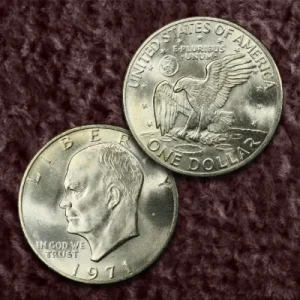
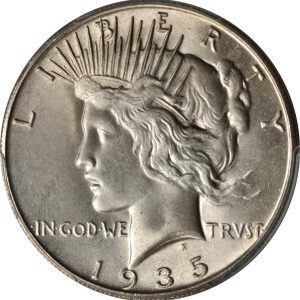
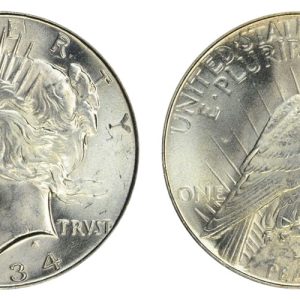
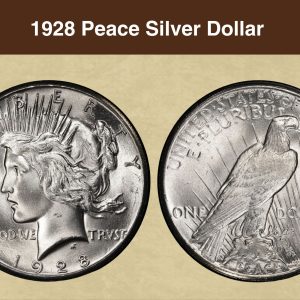
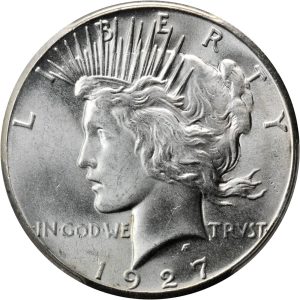
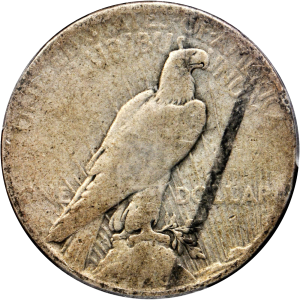
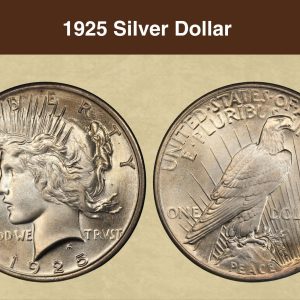
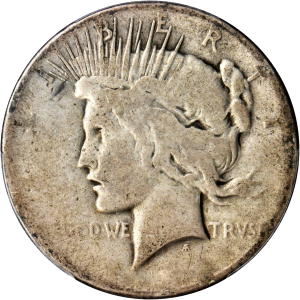
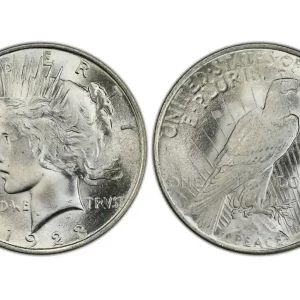
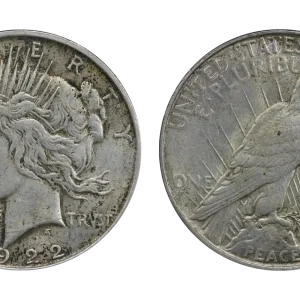
How much is a 1881 CC Morgan dollar worth?
The value of an 1881-CC Morgan silver dollar varies significantly based on its condition and grade, ranging from around $450 for lower-grade circulated examples to over $16,000 for high-grade, uncirculated coins. Its value is driven by its status as a low-mintage, scarce Carson City coin, especially coins that were later released from government GSA hoards.
What makes a 1881 silver dollar rare?
An 1881 silver dollar is rare based on its mint mark, with the “CC” from the Carson City Mint being the most valuable due to a very low mintage of 296,000 coins. Other factors that make certain 1881 Morgan silver dollars rare include being a high-grade, uncirculated specimen with excellent strike and eye appeal, or a proof coin, as these are much harder to find in top condition than common circulated coins.
Which CC Morgan dollar is most valuable?
The most valuable “CC” Morgan dollar is the 1889-CC, due to its extremely low survival rate in high grades, making it one of the rarest Morgan dollars overall. While other “CC” dates like the 1885-CC are rare, the 1889-CC is considered the king of Carson City coins, particularly in Mint State.
Where is the mint mark on a 1881 CC Morgan Silver Dollar?
On these historic coins, the mint mark can typically be found on the reverse side, just above the denomination. For example, the mint mark is located below the wreath on the Morgan Silver Dollar, while on the Peace Silver Dollar, it is positioned near the eagle’s tail feathers.